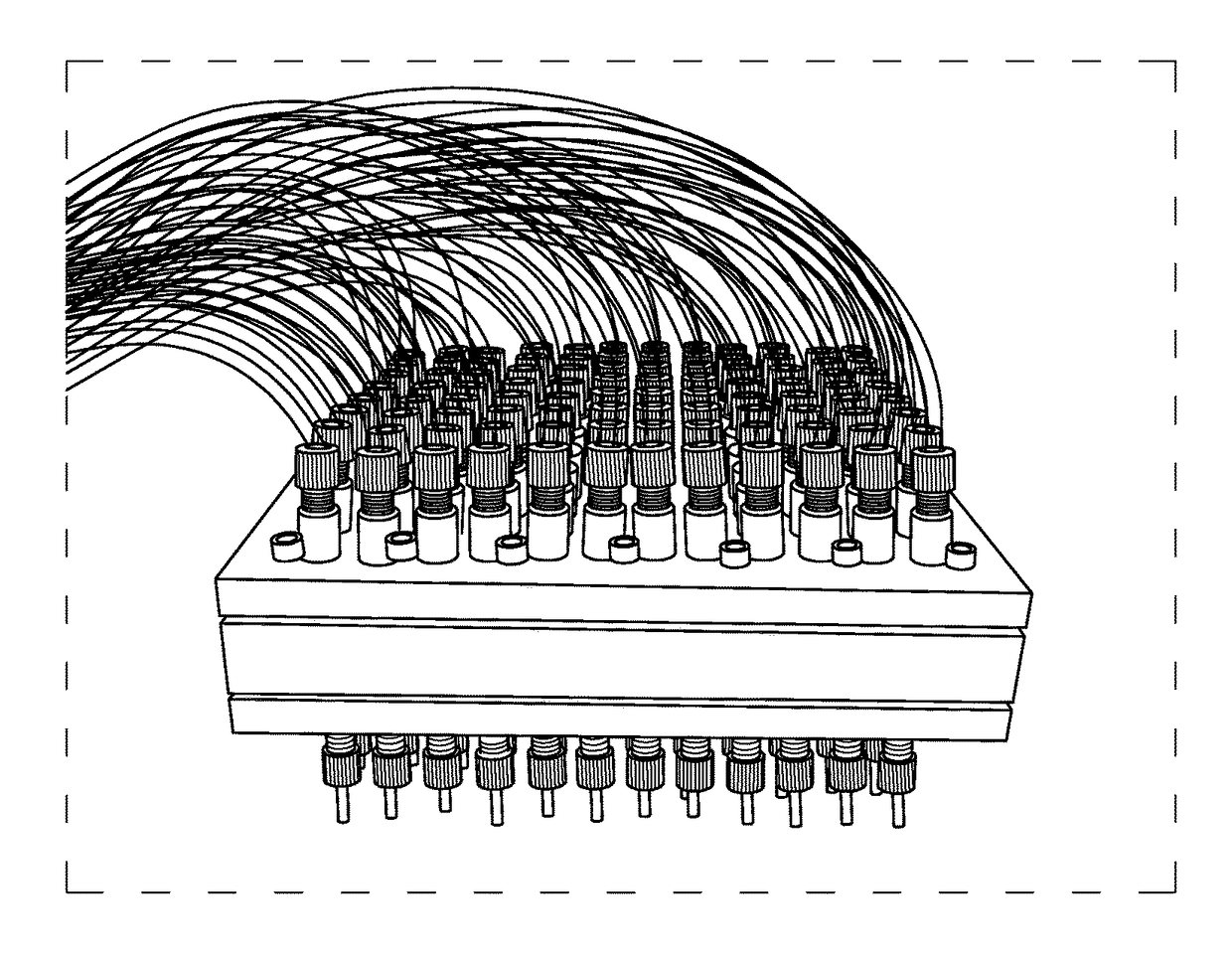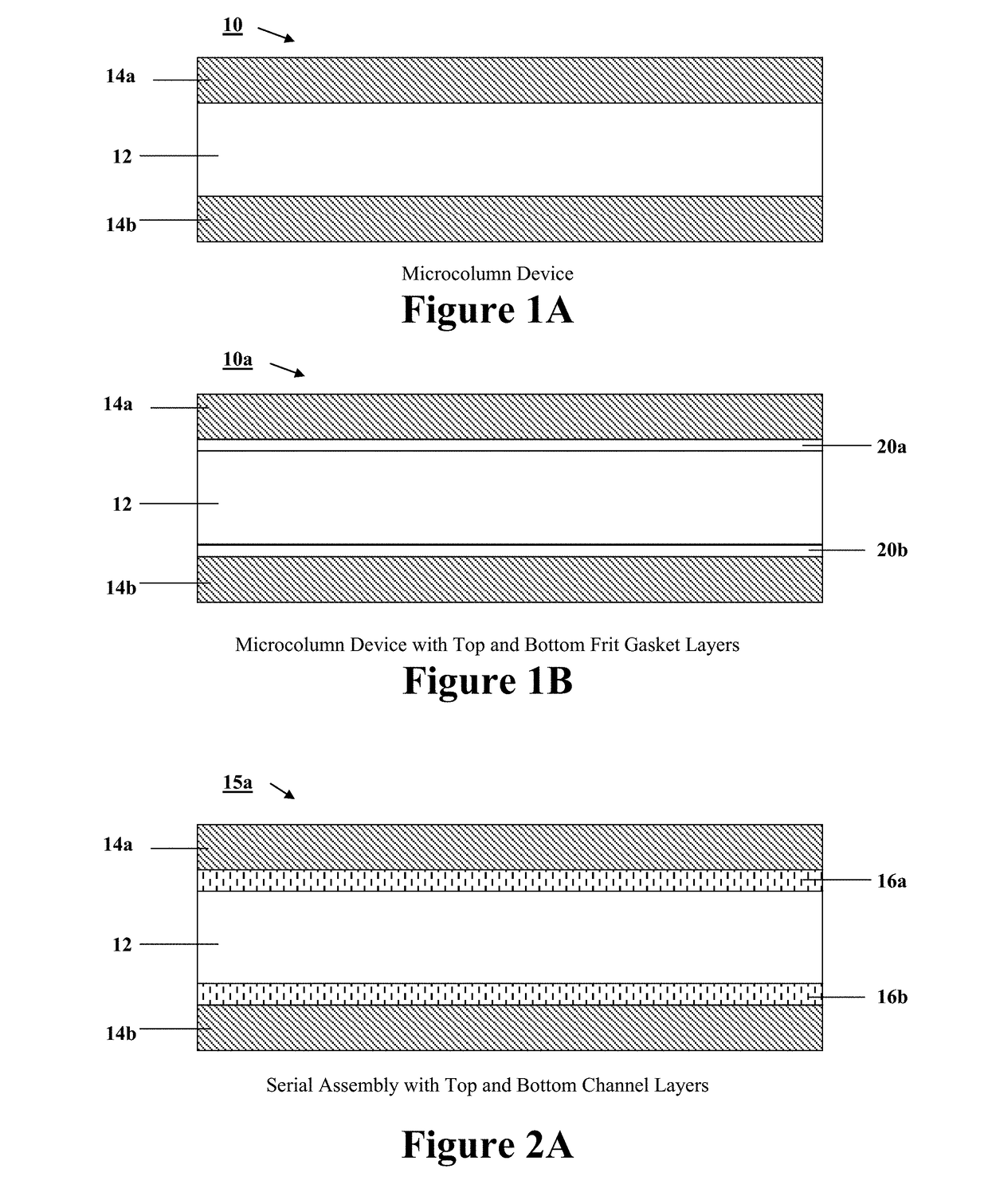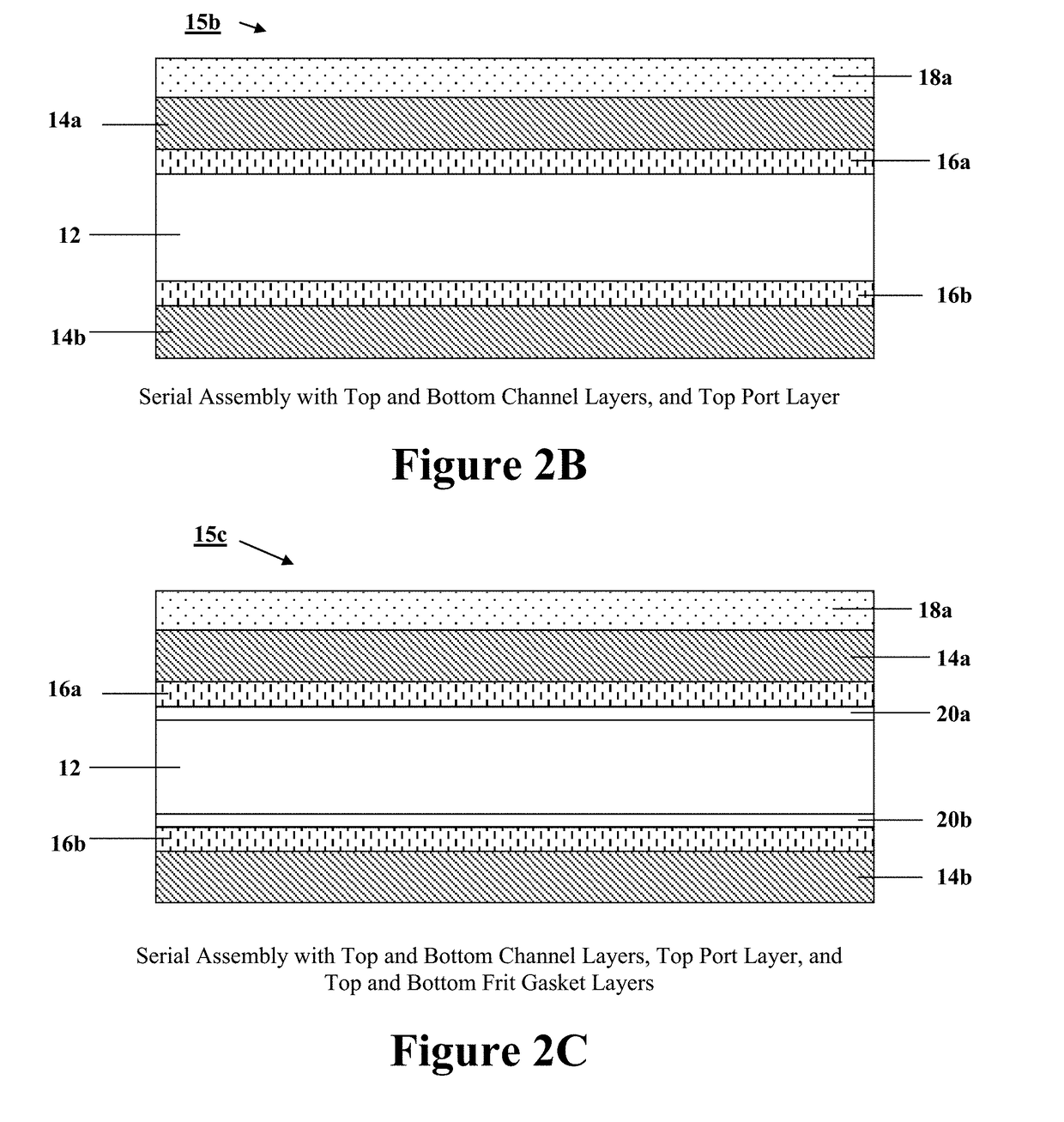Programmable and reconfigurable microcolumn affinity chromatography device, system, and methods of use thereof
a chromatography device and microcolumn technology, applied in the field of microcolumn affinity chromatography devices, can solve the problems of difficult scaling of multiplexed or parallel selections, significant discrepancies, and little has been done to characterize and optimize new or current technologies, etc., to achieve easy customization and reconfigurability, and not easily scalable
- Summary
- Abstract
- Description
- Claims
- Application Information
AI Technical Summary
Benefits of technology
Problems solved by technology
Method used
Image
Examples
example 1
High-Throughput Binding Characterization of RNA Aptamer Selections Using a Microplate-Based Multiplex Microcolumn Device
[0141]This example describes a versatile 96-well microplate-based device that utilizes affinity microcolumn chromatography to complement downstream plate-based processing in aptamer selections. This device is reconfigurable and is able to operate in serial and / or parallel mode with up to 96 microcolumns. We demonstrate the utility of this device by simultaneously performing characterizations of target binding using 5 RNA aptamers and a random library. This was accomplished through 96 total selection tests. Three sets of selections tested the effects of target concentration on aptamer binding compared to the random RNA library using aptamers to the proteins GFP, hHSF1, and NELF-E. For all three targets, we found significant effects consistent with steric hindrance with optimum enrichments at predictable target concentrations. In a fourth selection set, we tested the...
example 2
Supplementary Material
High-Throughput Binding Characterization for RNA Aptamers Selections Using a Microplate-Based Multiplex Microcolumn Device
Preparation of Recombinant Protein Targets:
[0158]Recombinant proteins were expressed in BL21(DE3)-RIPL E. coli cells (Agilent Technologies) transformed with plasmids that encode for hexahistidine-tagged GFP, Drosophila NELF-E, and UBLCP1, or GST-tagged hHSF1 (Table 1). Two or four liter LB cultures supplemented with 100 μg / mL ampicillin were inoculated with starter LB culture derived from a single colony and grown at 37° C. until the OD600 reached approximately 0.6. Protein expression was induced by the addition of IPTG to a final concentration of 1 mM. After an additional incubation, bacteria were collected by centrifugation and the resulting pellet was processed according to the manufacturer's instructions for Ni-NTA Superflow (Qiagen) or Glutathione-agarose (Thermo Scientific) resins. SDS-polyacrylamide gel electrophoresis (SDS-PAGE) was ...
PUM
| Property | Measurement | Unit |
|---|---|---|
| volume capacity | aaaaa | aaaaa |
| volume capacity | aaaaa | aaaaa |
| concentrations | aaaaa | aaaaa |
Abstract
Description
Claims
Application Information
 Login to View More
Login to View More - R&D
- Intellectual Property
- Life Sciences
- Materials
- Tech Scout
- Unparalleled Data Quality
- Higher Quality Content
- 60% Fewer Hallucinations
Browse by: Latest US Patents, China's latest patents, Technical Efficacy Thesaurus, Application Domain, Technology Topic, Popular Technical Reports.
© 2025 PatSnap. All rights reserved.Legal|Privacy policy|Modern Slavery Act Transparency Statement|Sitemap|About US| Contact US: help@patsnap.com



